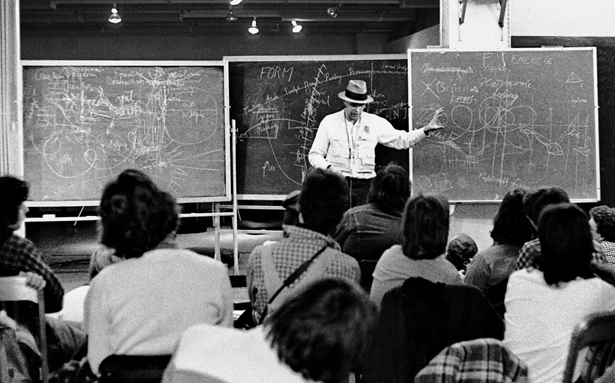John Ruskin on Teaching 15/01/20

John Ruskin on Teaching
After the introduction lecture I was surprised by how many of the thinkers and researchers associated with pedagogical ideas were unfamiliar to me. While this has been a good challenge of my thinking and reading comfort zone, I thought, in order to transition smoothly into different ideas, it would be beneficial to relate the ideas of a writer I’m familiar with to theories around teaching and learning. This will probably become an ongoing process, but I wanted to start with John Ruskin.
Heads, Hands and Inspiration
Writing in the wake of the industrial revolution Ruskin believed there was a separation between the head (thinking about the design of objects) and the hand (making those objects). This resulted in a divide between the revered ‘thinker’ and the worker who was looked down upon. Instead, Ruskin speculated that these two roles should always be mixed writing that ‘It is only by labour that thought can be made healthy, and only by thought that labour can be made happy.’ (The Stones of Venice, 1853) There is a good methodology for students here. When in the early stages of a project they will often spend large amounts of time researching, and while this may seem like work on the surface it can sometimes be yet another complex form of procrastination. Research (thought) should quickly be paired with something practical (labour) to make that thought ‘healthy’ (‘health’ is strange wording but symptomatic of a particularly Victorian obsession). This is something echoed by Vladimir Nabokov when he discussed the abstraction and mental torment of thinking about writing without a pen in hand (http://www.lib.ru/NABOKOW/Inspiration.txt), concluding that the illusive white rabbit ‘inspiration’ won’t appear without connecting head and hand.
Working Laboriously
Ruskin was also quick to point out the difference between the creativity of ‘work’ and the manual toil of ‘labour’. Although he advocated for a symbiosis of the two activities it’s important to understand the difference so the two are not conflated into some kind of murky territory. Or, a situation where one is favoured more than another, which in turn creates its own problems. Do students consider university to be work or labour? I think sometimes it is work, and they could be introduced to the benefits of labour.
It also an important distinction to make when preparing students for their time after university. Do they want to work or labour?
Perfectionism and its discontents
‘No good work whatever can be perfect, and the demand for perfection is always a sign of a misunderstanding of the ends of art.’
Ruskin highlighted that through this complex intertwining of head and hand there was an increased chance of imperfection. However, rather than being a negative, he saw imperfection as a vital aspect of all artistic production, and, counterintuitively perhaps, the discontentment that follows which is also needed to push the artist forward. Encouraging students, particularly first year students, to embrace imperfection is a big challenge when they are constantly bombarded with ‘perfect’ and finished imagery on instagram and other social media platforms. Creating a comfortable atmosphere for experimentation and failure is vital to combat this, as well as celebrating different types of mistakes as well as success.
Nothing that lives is, or can be, rigidly perfect. Striving for this goes against all the best parts of being creators.
Criticism
During my time as a student I was always asked what I liked about things, an embodiment, no doubt, of an uncritical meritocracy. Reading Ruskin reminds me that people should be asked what they don’t like more often. For example, I dislike how Ruskin reduces everyone to ‘men’ and ‘gentlemen’, and how he succumbs the particularly Victorian ailment of classifying the world into neat opposites and polarities which do not fit in a multifaceted modern world.
